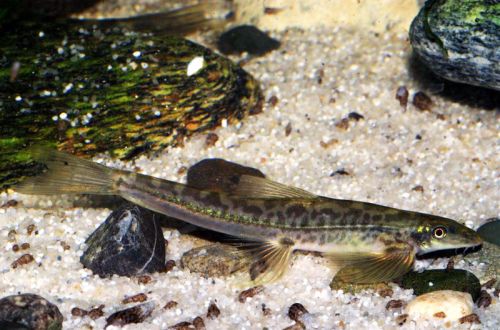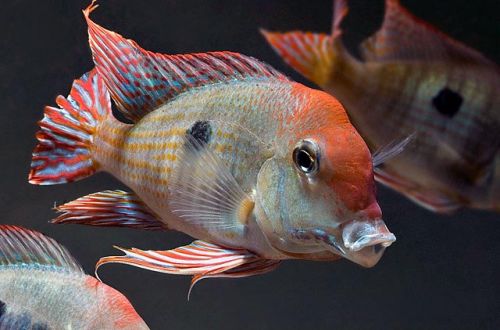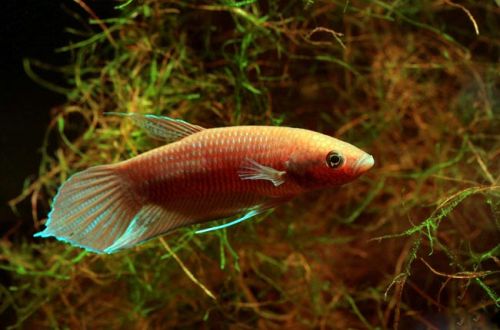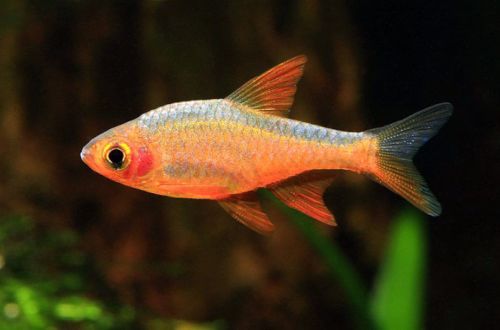
Annamia normani
Annamia normani, scientific name Annamia normani, belongs to the family Balitoridae (River loaches). It is named after the Anname region, the old name for central Vietnam and the British ichthyologist John Norman (1898-1944), who discovered and gave the first scientific description of this species. The fish is not often found on sale, mainly distributed in Asia. Those found in commercial aquariums often look malnourished because they are not properly nourished and kept in unsuitable conditions. Many simply do not reach Europe.

Contents
Habitat
It comes from Southeast Asia from the territory, lives in the Mekong River basin in Vietnam, Laos and Cambodia. It is also found in rivers and streams flowing along the slopes of the Annam Mountains, not connected with the Mekong River. A typical habitat is as follows – a shallow stream with a fast current and very clear water, the channel has many rapids and relatively calm backwaters, the substrate is rocky. Aquatic plants grow mainly along the coast.
Brief information:
- The volume of the aquarium – from 100 liters.
- Temperature – 16-22°C
- Value pH — 6.0–7.5
- Water hardness – soft (1-10 dGH)
- Substrate type – fine gravel, rocky
- Lighting – bright
- Brackish water – no
- Water movement – moderate / strong
- The size of the fish is 8–10 cm.
- Food – live or frozen food
- Temperament – peaceful
- Content in a group of at least 6–8 individuals
Description
Adult individuals reach a length of about 8–10 cm. Sex differences are weakly expressed – females are somewhat larger than males. The body is elongated and, as if, flattened from above. The fins are wide, fan-shaped. The color is gray with an ornament of irregularly shaped figures.
Food
The basis of the diet should be live or frozen food (bloodworm, daphnia, brine shrimp) in combination with herbal supplements, such as spirulina flakes. Dry foods such as flakes, granules, tablets are used as a source of essential trace elements and vitamins, but are used to a limited extent.
Maintenance and care, arrangement of the aquarium
The optimal size of the aquarium for a group of 6-8 fish starts from 100 liters. When keeping, it is important to provide habitat conditions similar to natural ones. Crystal clear water rich in oxygen with intense flow, rocky substrate with smooth boulders, driftwood can be added. Most aquatic plants will not thrive in such an environment, so choose hardy, low maintenance species such as Anubias, Bolbitis Gedeloti, Java fern, etc., or artificial alternatives.
Choosing the right filtration system is key. A productive filter is able to solve a number of problems: maintain high water quality and the level of dissolved oxygen, create an internal flow. If necessary, you can independently design a system of artificial movement of water.
Aquarium maintenance comes down to regular cleaning of glass from plaque and soil from organic waste, weekly renewal of part of the water (30–50% of the volume) with fresh water, and periodic preventive maintenance of equipment.
Behavior and Compatibility
Peaceful calm fish, able to get along with many tropical species. However, due to the specific conditions of detention, the number of possible neighbors in the aquarium is significantly limited. Keeping a group of at least 6–8 individuals, with a smaller number of Annamia Normani, will become overly shy.
Breeding / breeding
At the time of writing, there were no successful experiments in breeding Annamia in a home aquarium. Fish fry for the aquarium trade are caught in the wild.
Fish diseases
By their nature, non-ornamental fish species that are close to their wild relatives are quite hardy, have high immunity and resistance to various diseases. Health problems can be the result of inappropriate conditions, so before starting treatment, check the quality and parameters of the water. If necessary, bring all values back to normal and only then begin treatment, if necessary. Read more about diseases, their symptoms and methods of treatment in the section “Diseases of aquarium fish”.





